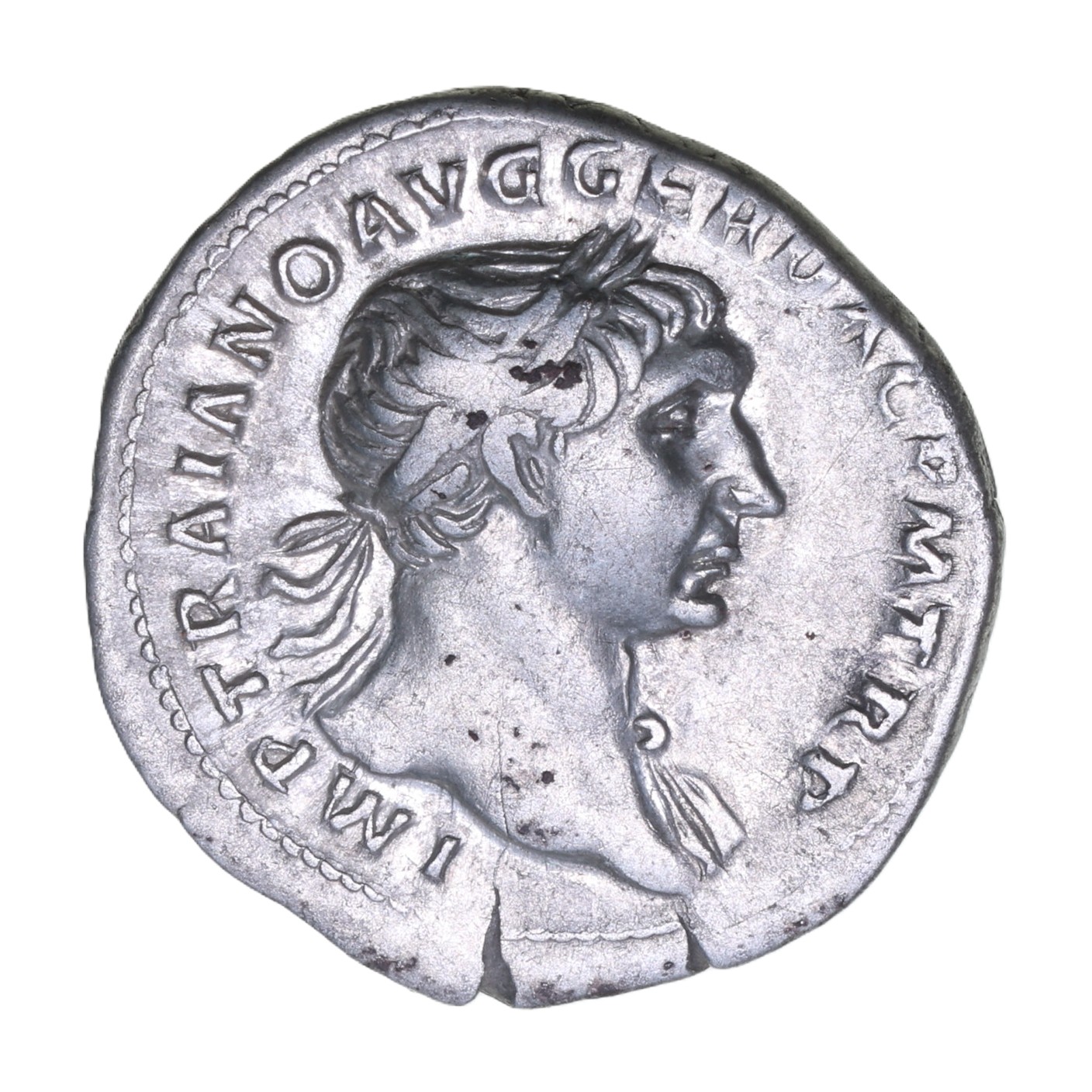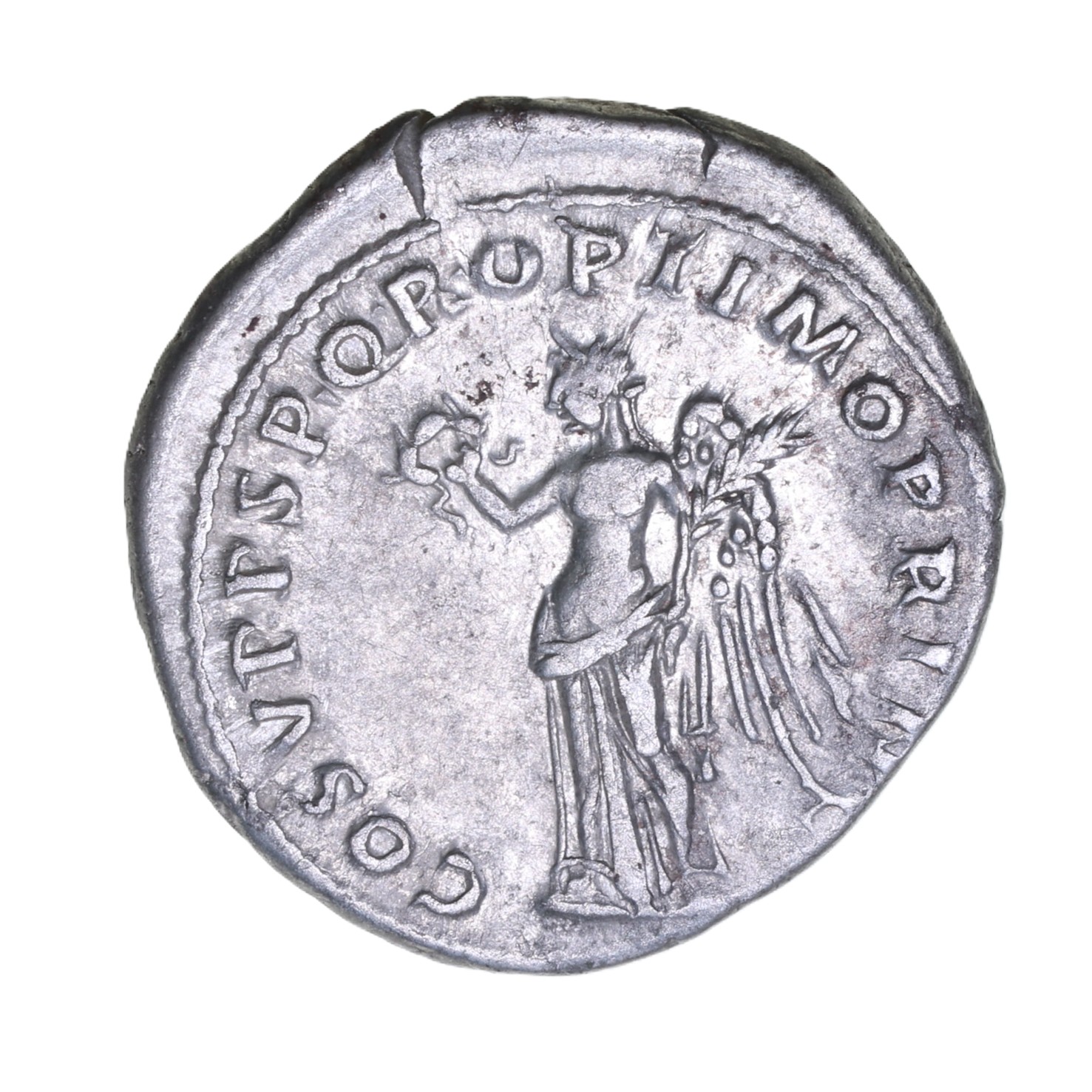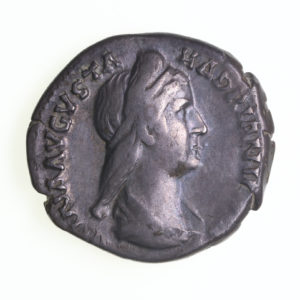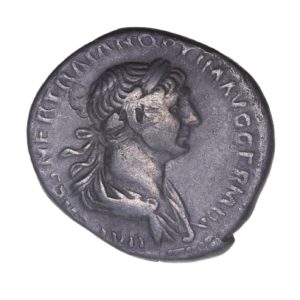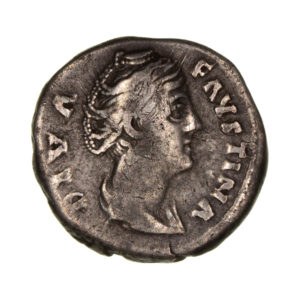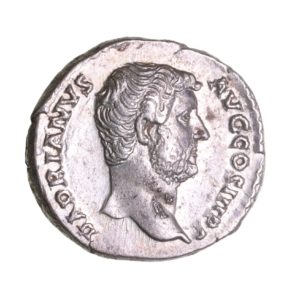Trajan AD 97-117 Silver Denarius Rome * British Find*
£165.00
Trajan AD 97-117 Silver Denarius
Laureate bust right/Victory standing left holding wreath and palm
Rome mint
RCV3129; 19mm, 2.96g.
This coin was found in the vicinity of Beckfoot Roman Fort, Cumbria.
Classical References for Bibra
The sole classical geographical source for the Roman name of the Beckfoot fort is the Bribra entry in the Ravenna Cosmology (R&C#119), which appears between the list entries for Alauna (Maryport) and Maglona (Old Carlisle).
The Bibra Garrison
To date, only one inscribed stone has been uncovered from Roman Beckfoot, which fortunately provides the name of one of its garrison units; Cohors II Pannoniorum, a five-hundred strong infantry unit from the province of Pannonia, the region of the modern Czech Republic.
Trajan
Trajan was born in Spain around AD 53. Trajan had a military career as a young man and as a legionary commander in AD 88/89 he was involved in the suppression of a revolt in Upper Germany. In AD 91 he held his first consulship before being adopted as heir to Nerva in AD 97. The next year he was crowned emperor.
Trajan’s reign is one of military glory and conquest. He did not conceal his ambition to emulate Julius Caesar and Alexander the Great. One of Trajan’s main conquests was the Kingdom of Dacia in AD 107. This achievement was commemorated by the erection of Trajan’s column in Rome. Trajan later went on to conquer Arabia although his main ambition was to destroy Rome’s great rival the Parthian Kingdom in Persia. However, his failing health and a Jewish revolt forced him to abandon this project and Trajan died on his way back to Rome in AD 117.
Trajan issued coinage on a vast scale commemorating not only his military victories but also other achievements. It was during Trajan’s reign that coinage issued prior to Nero was demonetized and melted down. In doing so a series of restoration coins were produced reviving some of the principal Republican denarius types as well as aurei which commemorate certain rulers in Rome’s past.
Out of stock

